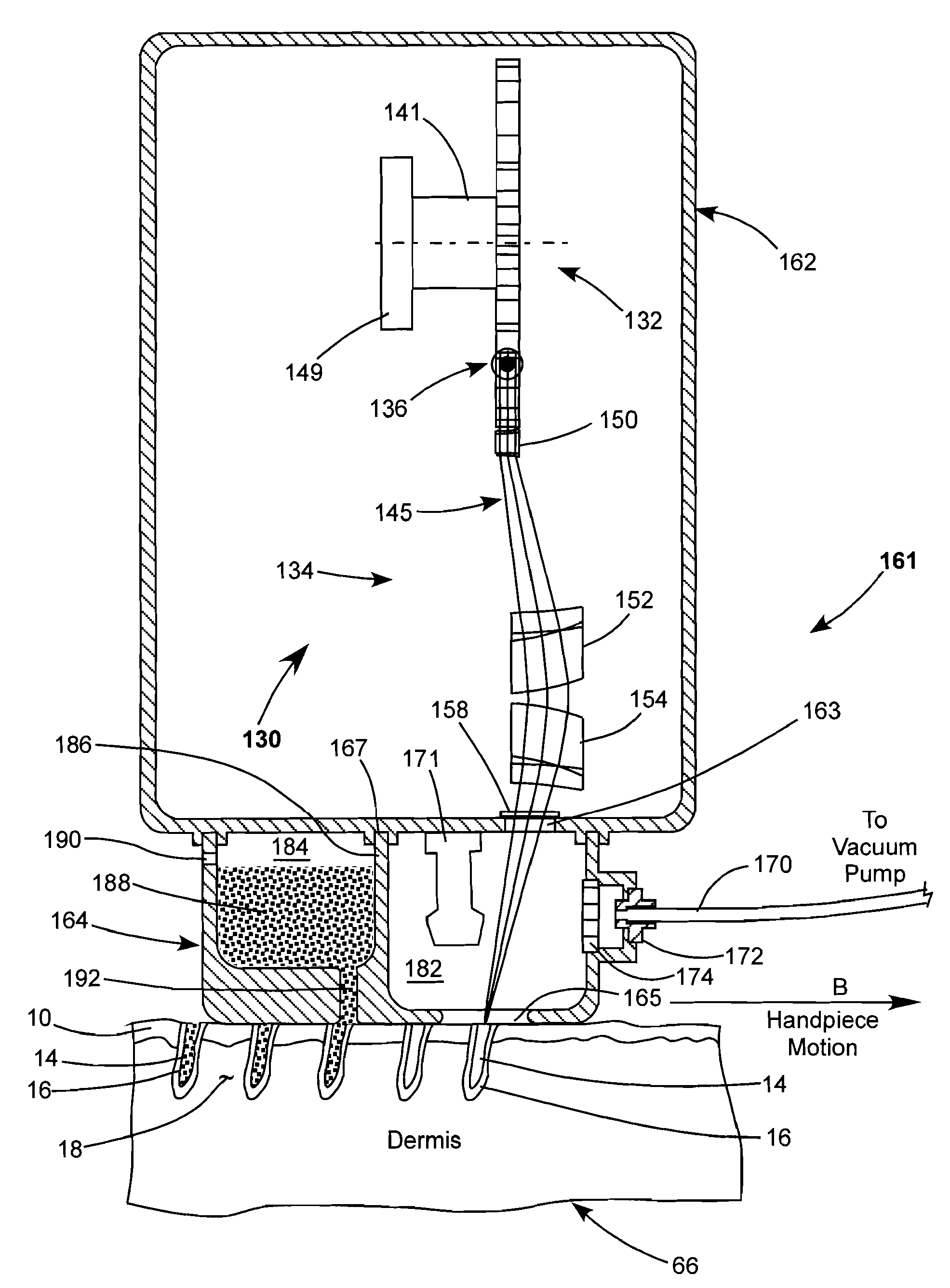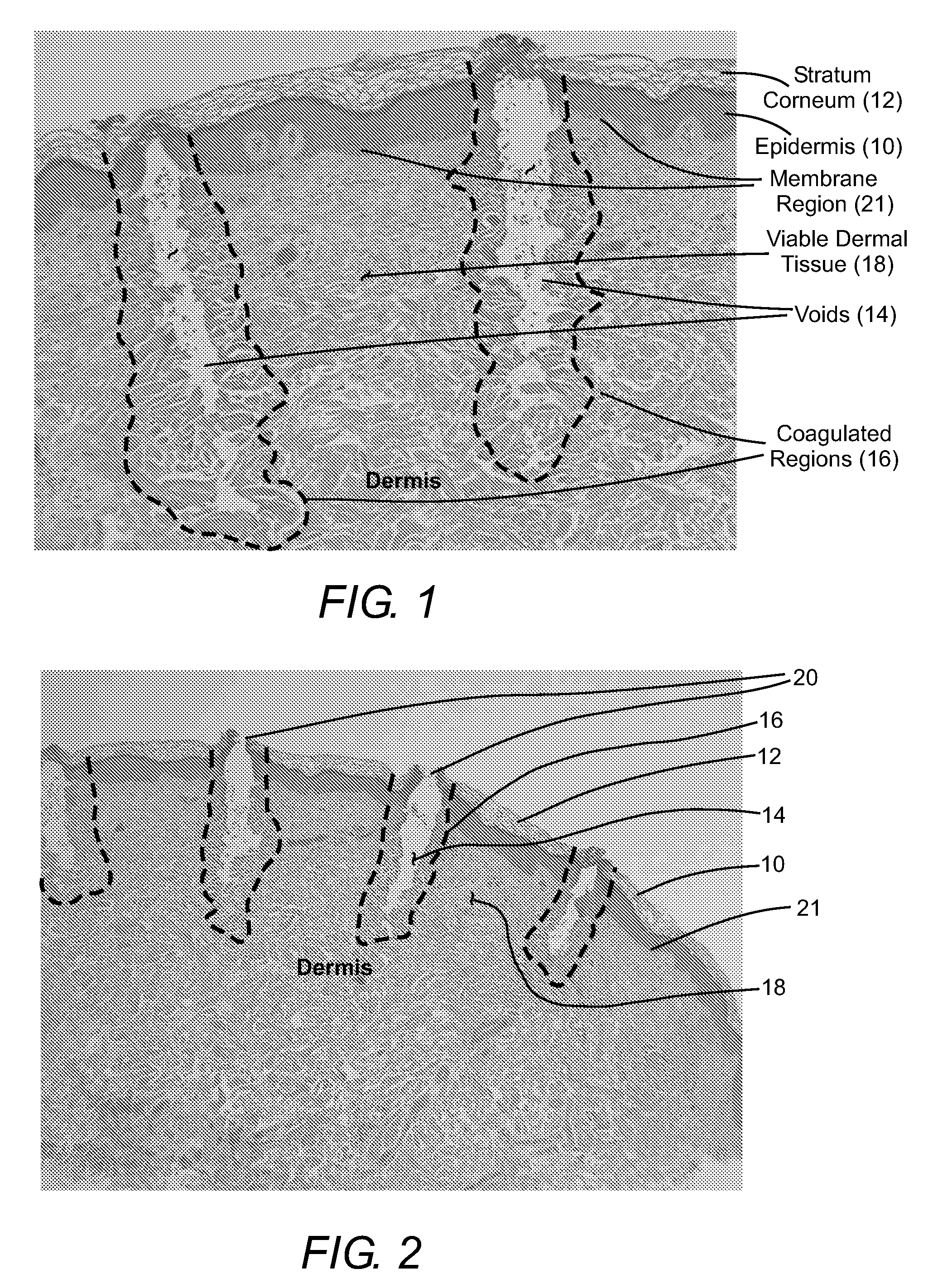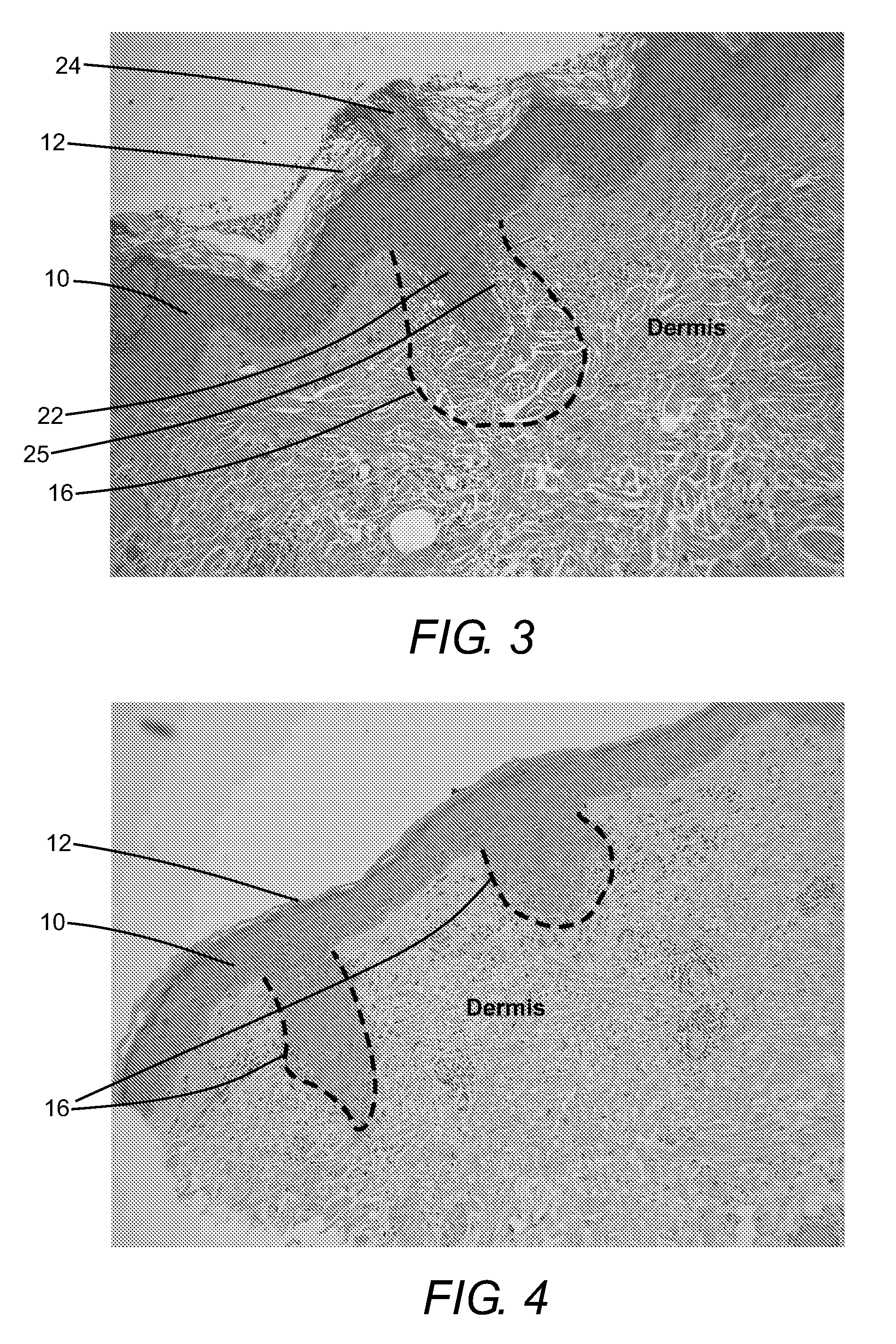Treatment of vitiligo by micropore delivery of cells
a technology of micropores and cells, applied in the field of treatment of vitiligo, can solve the problems of affecting about 2% of the world's population, reducing self-esteem, and hypopigmentation of the skin, and achieve the effect of treating or preventing pigmentation loss
- Summary
- Abstract
- Description
- Claims
- Application Information
AI Technical Summary
Benefits of technology
Problems solved by technology
Method used
Image
Examples
example 1
Void creation
[0117] Freshly excised human skin samples are irradiated with a 30 W, 10.6 μm CO2 laser at varying pulse energies. The laser beams carry a near diffraction limited 1 / e2 Gaussian spot size of approximately 120 μm, with pulse energies ranging from about 100 μJ to about 1000 μJ, providing radiant exposures between about 1 J / cm2 and about 9 J / cm2 that are delivered through an apparatus capable of a repetition rate up to 1500 spots / second.
[0118] The skin is heated on a digital hot plate (Cole-Parmer Instrument Co., Vernon Hills, Ill.), and the skin surface temperature is measured with a Mintemp MT4 infrared probe (Raytek Corporation, Santa Cruz, Calif.). The laser treatment is initiated when the skin surface reaches a temperature of 98±3° F. The laser handpiece is translated at a specific velocity by using a precision linear stage driven by an ESP 300 motion controller (Newport Co., Irvine, Calif.). The firing rate of the laser is automatically adjusted by the laser handp...
example 2
Apparatus 2 for Micropore Channel or Void Creation
[0119] An apparatus comprising a 10.6 μm CO2 laser capable of delivering varied pulse energies and a laser handpiece is assembled. The laser beams carry a near diffraction limited 1 / e2 Gaussian spot size of approximately 120 μm. The laser is capable of delivering pulse energies of at least between about 120 μJ and about 500 μJ. The apparatus is capable of providing radiant exposures between about 1 J / cm2 and about 9 J / cm2. The apparatus is capable of a repetition rate up to 1500 spots / second. The firing rate of the laser is automatically adjusted by the laser handpiece to produce a specific density of lesions. When used to treat skin, the apparatus produces micropore channels or voids between about 30 μm and about 500 μm in depth.
example 3
Apparatus 3 for Micropore Channel or Void Creation
[0120] An apparatus comprising a 1.925 μm thulium fiber laser capable of delivering varied pulse energies and a laser handpiece is assembled. The laser beams carry a near diffraction limited 1 / e2 Gaussian spot size of approximately 50 μm. The laser is capable of delivering pulse energies of at least about 200 μJ. The apparatus is capable of providing radiant exposures between about 11 J / cm2 and about 85 J / cm2. The apparatus is capable of a repetition rate up to 1500 spots / second. The firing rate of the laser is automatically adjusted by the laser handpiece to produce a specific density of lesions. When used to treat skin, the apparatus produces micropore channels or voids between about 30 μm and about 500 μm in depth.
PUM
 Login to View More
Login to View More Abstract
Description
Claims
Application Information
 Login to View More
Login to View More - R&D
- Intellectual Property
- Life Sciences
- Materials
- Tech Scout
- Unparalleled Data Quality
- Higher Quality Content
- 60% Fewer Hallucinations
Browse by: Latest US Patents, China's latest patents, Technical Efficacy Thesaurus, Application Domain, Technology Topic, Popular Technical Reports.
© 2025 PatSnap. All rights reserved.Legal|Privacy policy|Modern Slavery Act Transparency Statement|Sitemap|About US| Contact US: help@patsnap.com



